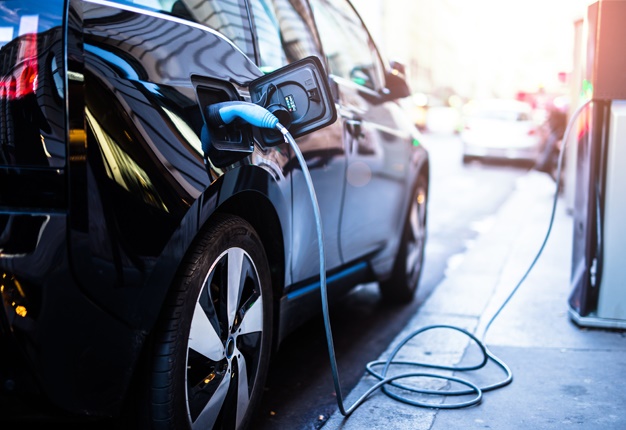
2017 is winding up to be another year of change in the motor industry. Hemmed in by concerns about the motorcar’s impact on human health and the environment, and with rapidly evolving technological change (and new disruptive players) challenging the very basis of its global business models, the motor industry is undergoing dramatic and rapid change.
Here are five top automotive trends from 2017:
1. The relentless advance of electrification
While it is certainly premature to write the obituary of the internal combustion (ICE) engine, in the medium term you will see more and more electrification brought into new cars. That’ll mean plug-in hybrids, hybrids, and more Electrical Vehicles. There are currently just 100 or so registered EVs on South Africa’s roads, but this is likely to change. So far this year, Volvo announced that it will stop developing new pure ICE cars from 2018, and Nissan has released a new-generation Leaf that has a claimed range of 378km – a vast improvement. This year Jaguar announced that the i-Pace EV will be arriving in SA in 2019 and that the E-Pace will be available as a hybrid. Mercedes-Benz announced the arrival of an EV brand called EQ, and also announced that it will wire your home for solar power with Mercedes Energy. Tesla is ramping up production of the mass-market Model 3, aiming for 20 000 a month by the end of 2017. South Africans might not be persuaded yet, but the future is at least partly electric, and we all need to get used to the idea: the UK government this year announced a potential plan to ban ICE motors by 2040, following on from last year’s announcement by Norway that it will do the same by 2025.
2. Diesel’s fall from grace
Diesel cars were popularised by attractive tax regimes around the world, and their proven fuel-efficiency. However, recent research has established that more than three million people a year die prematurely due to outdoor air pollution. Diesel fumes - especially in European cities – play a significant role in this. European uptake of diesel technology has seen oil-burners make up more than half of some countries’ fleet, and this, researchers say, means nitrogen oxide (NOx) emissions kill about 75 000 Europeans prematurely every year. Such research does not exist in South Africa, but given the low quality of our diesel fuel, it seems unlikely that the situation is any better here. EU regulators and city halls across Europe are scrambling to ban diesels from their cities, just as car companies focus on developing EVs, petrol-electric hybrids and super-efficient petrol engines. US bank UBS reports that diesel sales will plummet to 10% of the EU market by 2025, and 4% globally by the same year.
3. SA market: Signs of life
South Africa’s market for new vehicles has shown signs of recovery in the second half of 2017, after disappointing negative growth for almost 18 months. Noting difficult trading conditions, a sluggish economy and lagging consumer confidence, the National Association of Automobile Manufacturers of SA (NAAMSAA) says the the possibility of overall growth in the calendar year nevertheless remains. Despite “political and economic policy uncertainty”, the months of June, July, August and September posting growth of 0.9%, 4.1%, 6.7% and 7% respectively, Naamsa says. This is largely in line with the improving Purchasing Managers’ Index, a measure of business confidence.
4. Split-spoke diamond-cut wheels
A welcome trend in exterior automotive design of late is split-spoke diamond-finished rims. All the rage at the premium end of the automotive world, this adds great dynamic, textured design in an area once abandoned to bling. Great examples can be seen on the newly launched Range Rover Velar, various Mercedes-Benz and Mercedes-AMG wheels, the new Audi A5 and on the Rolls-Royce Ghost. The set adorning the recently revealed new Audi A7 Sportback are spectacular.
5. Autonomous cars – a complicated matter
You can go, right now, and buy a Mercedes-Benz E-Class or a Volvo S90 that will, at the touch of a button, take over steering, braking, and acceleration for a short period of time. The 2017 E-Class will even change lanes for you at the touch of an indicator. But 2017 has seen cautious statements about the arrival of the fully driverless car as a mainstream vehicle from various sources. In the coming years, the first driverless cars will arrive, probably in small cities that have the infrastructure that will support their technological requirements. Extremely complex matters of ethics and liability need to be thrashed out between governments and manufacturers before the autonomous car is a widely available option. The arrival this year of the E-Class, Volvo S90, and the BMW 5-Series illustrates the slow percolation of autonomous technology into the market that will increase comfort and safety for drivers. Full autonomy is some time away, and a lot of work remains to be done.
For a car with all the right trends - AutoTrader South Africa has a range of new and used vehicles to suit your specific needs. AutoTrader South Africa has been the leading media market place for the past 25 years, for buying and selling vehicles. Whether you are looking to buy a brand-new car or are in the market for a pre-loved model, AutoTrader has over 71 000 cars to choose from! Find your ideal car on AutoTrader.




 Publications
Publications
 Partners
Partners










